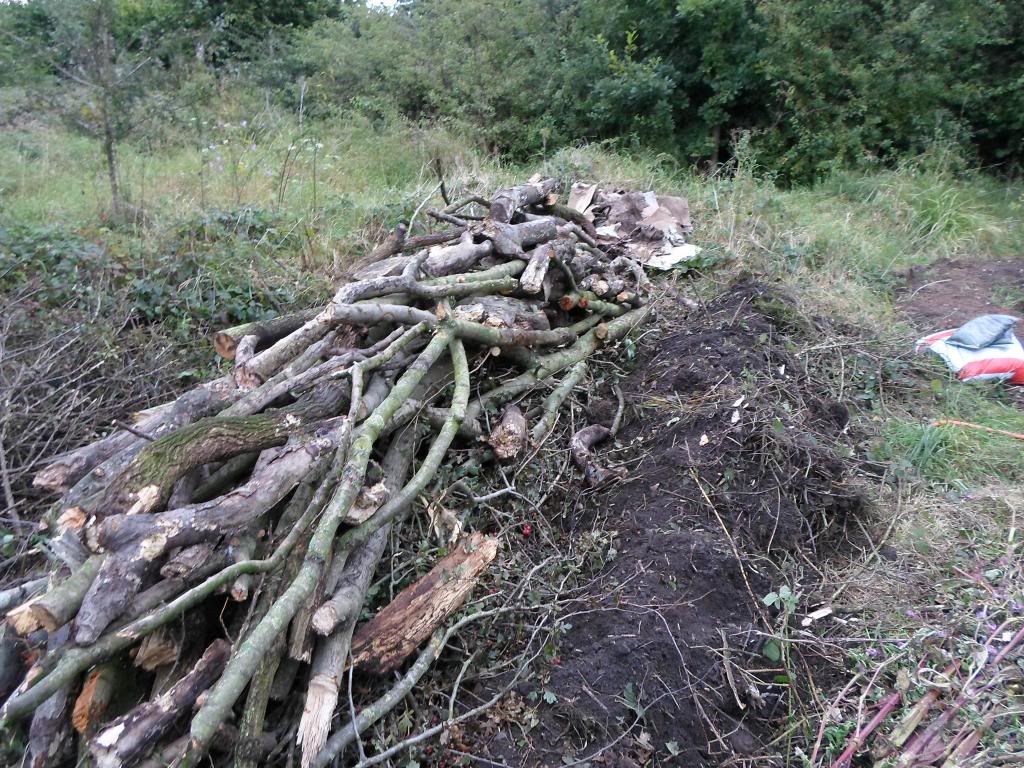Greetings Permies! I have not posted here for some time but I have recently been writing up some of the photos from a project I started a couple of years ago. I'm planning to write three or more 'articles' on the project which may or may not be of interest to permie blogs and sites. First though I would love your feedback and questions on this first draft and to give some content back to lovely folks at permies who have given me so much for nothing.
The Embankment
Origins
A wise man once told me that good design comes from a hundred hours of hard thinking for each hour of hard work.
When I began reading about permaculture, I was hooked by the theories; building surplus into the system instead of extracting it, maximising functional interactions, designing economic processes around ecosystems; the endless possibility! At some point though the inspiring photos and ingenious concepts can become counterproductive if you're not doing anything with them. But where to start?
Well you have to start somewhere and for me that meant finding disused land to experiment with. It was then that I discovered that the short section of derelict railway embankment near my house which I had always assumed to be an overgrown weedy nightmare was in fact an encyclopedia, a wild food forest with many lessons to teach.
This was to be guerrilla gardening on the textbook definition of marginal land; a dead-end roadside verge with zero foot traffic, fenced in like a quarantine zone with no conventional agricultural purpose. Where do I sign up?
The Site:
North Yorkshire, UK at 54 degrees latitude, about 100m above sea level in a cool temperate climate modified by a strong maritime effect. Maximum temperatures in July average 21°C with minimum temperatures in late January which average 0°C with about 100 days of ground frost. Precipitation is remarkably consistent with summer lows of 45mm/month and winter highs of 65mm/month for an annual average of 680mm.
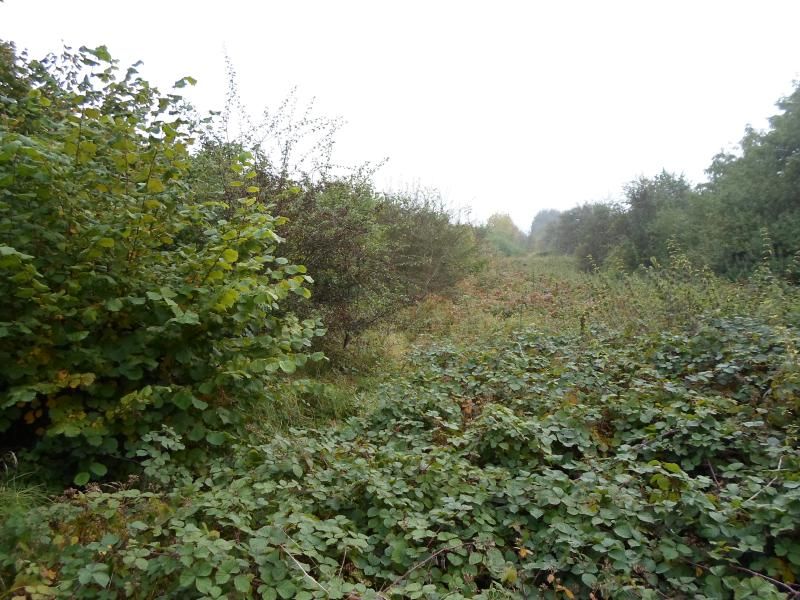
It's only when you start to act that you realise what you know, what you only thought you knew and what you still need to learn. Let's start with what I already knew.
The immediate impression walking on site was the wildly 'overgrown' sprawl of brambles lying between two thick hedges of trees which grow almost true north-south. This patten reveals the site's history as relict embankment from the railway era which ended here in the late 60's. The brambles have been patiently suturing the wound and nursing soil life and pioneer trees to fill the gap ever since.
The bramble occupies a niche in space at the edge of woodland ecosystems; in this case the effect is mirrored along the two edges to form one solid mat. Left to its own devises the decomposition of the annual bramble flush creates sheltered, fungal soil and allows pioneer trees like blackthorn to move in - closing the niche in time which the bramble temporarily occupied. One of the primary strategies for permaculture design on this site then is to increase the rate of this cycle to favour our preferred succession.
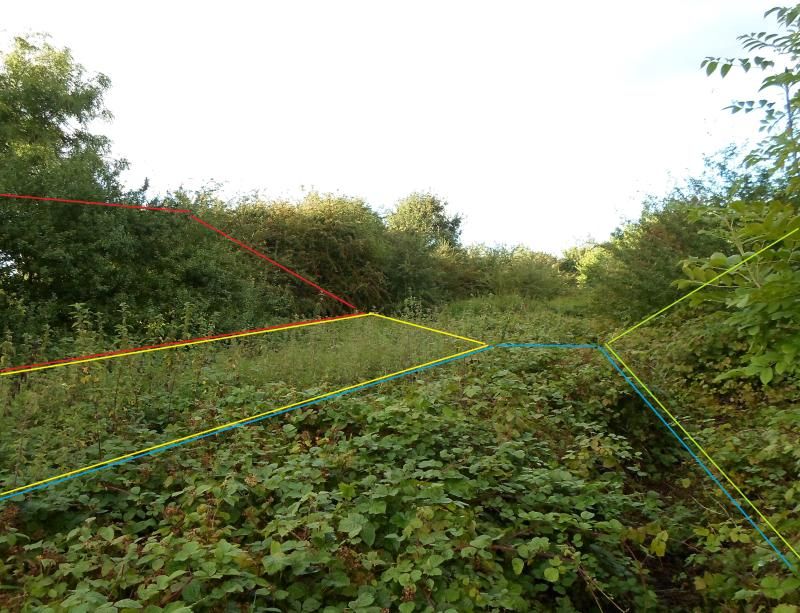
Within the major pattern of bramble succession there are of course minor patterns created by local site conditions; this is a simple breakdown of a prime example. In the red section there is lowest daily direct sun exposure. In the yellow section the nettles dominate under the moist shade of the hawthorn/blackthorn hedge. In the blue section brambles dominate but there are very few nettles. In the green section young ash trees find enough light to grow out of the brambles against the hedge of hazelnuts.
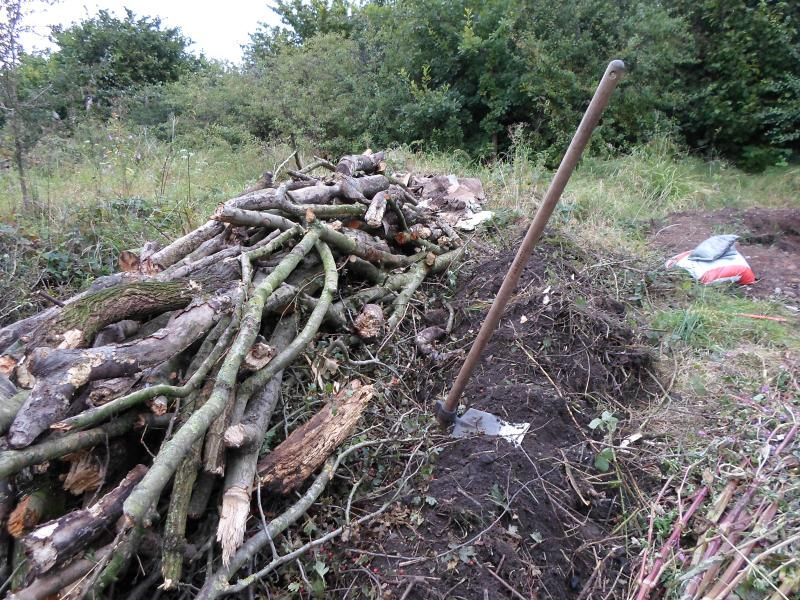
As the site it not immediately connected to the house and because my own circumstances meant that I was unlikely to be reliably available for ongoing maintenance, I decided early on to focus on experimenting with methods rather than wholesale regime change. This brings us to the 'things you only thought you knew'.
One of the first things I did on the site was perhaps one of the most over-ambitious as - in the spirit of direct trial and error - I quickly built a couple of Holzer style hugelkultur beds. This in turn led to one of the first lessons I received from the site. It's not that the concept is flawed - how could it be, it's incredibly simple; soil on wood - or even that the method was inappropriate to the site but that I had intended these to be zone 1 beds filled with relatively high maintenance crops. At that stage in my learning however, I was naively short of soil building and composting ability. The wood inside the hugelbeds themselves is happily decomposing under soil and is now becoming a great growing space but beds alone can't transubstantiate vegetables. At least not without the blessing of compost.
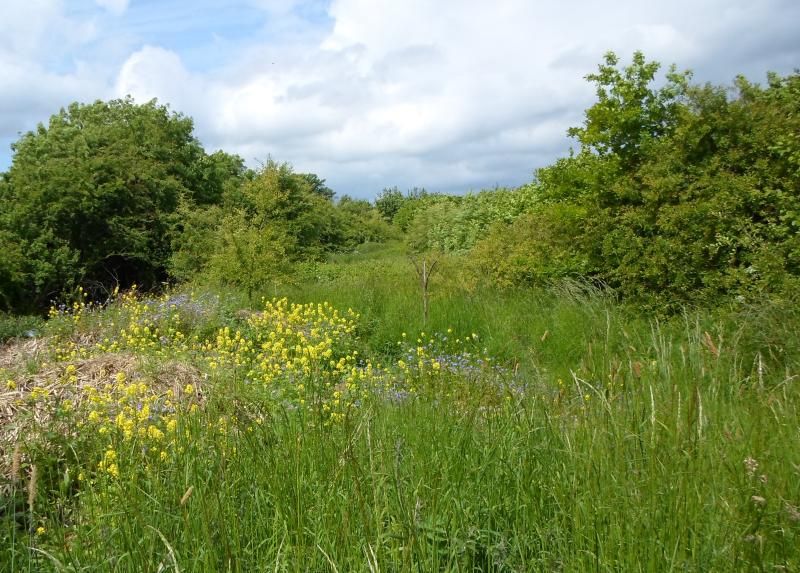
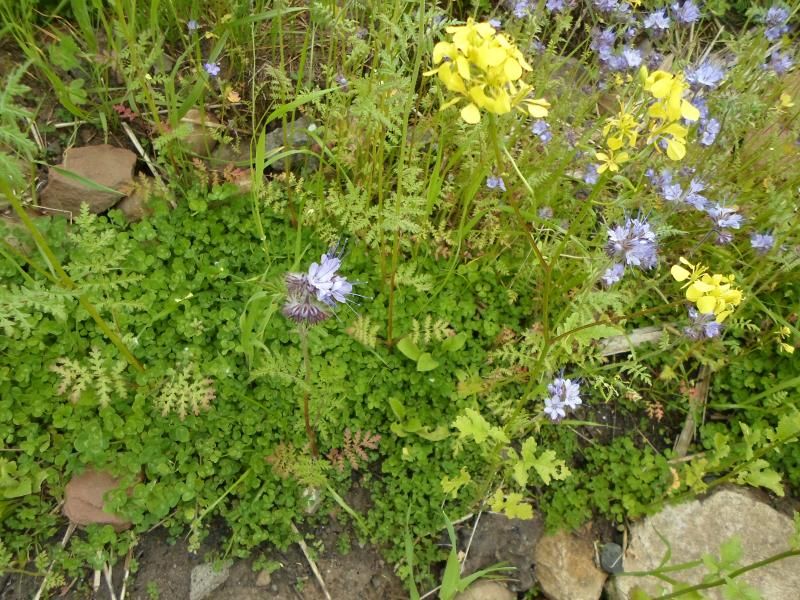
Nonetheless, following Sepp Holzer I broadcast a wide variety of cover crop, vegetable and soil conditioning plants to the beds. By midsummer the winners emerged as red clover, Caliente mustard and Phacelia tanacetifolia. With the hard work done and a cover crop growing I contented myself that by all accounts hugelbeds improve with age and scored that experiment a partial success.
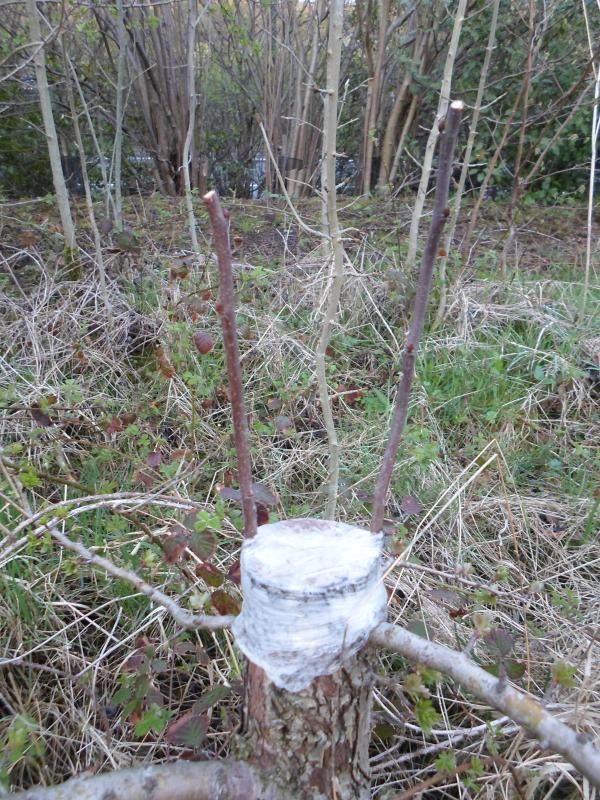
Over the first winter I experimented with low cost propagation rather than immediately forking out for nursery grown trees. This graft is medlar scion wood on hawthorn rootstock. Grafting falls firmly in the category of things I still need to learn although this graft has established itself nicely over a couple of seasons. Also, having read Ben Falk's words on hawthorn I have since grown to appreciate the food and medicinal value as equal to or greater than most fruits which it will take as a graft. Hawthorn is not something the embankment is short of however, despite a couple of grafts here and there.
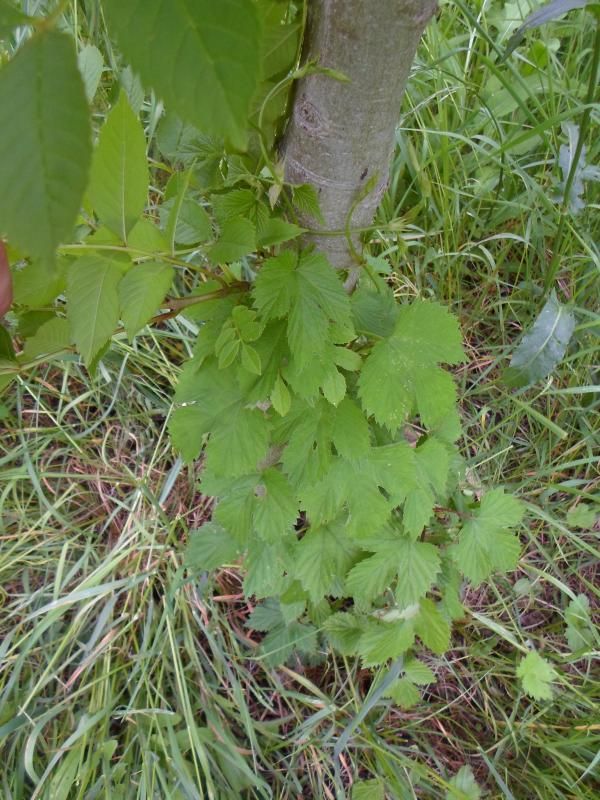
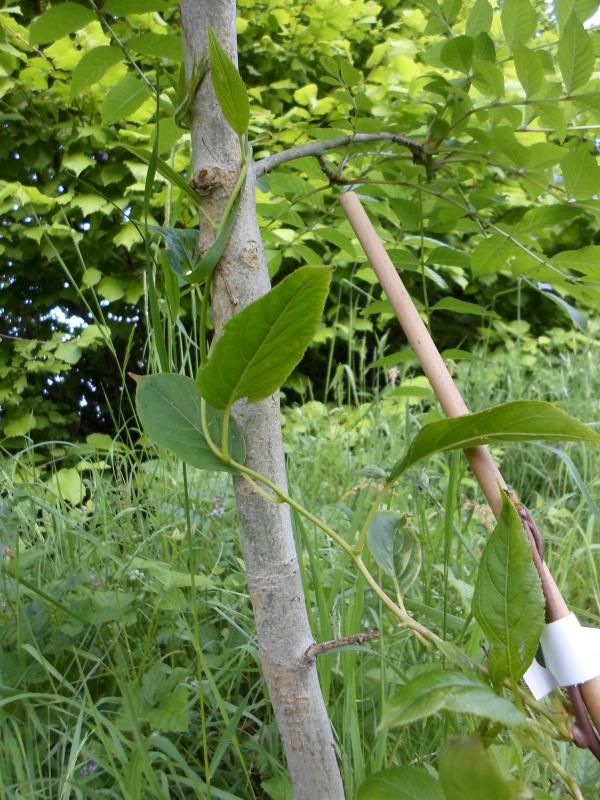
The gangly, young ash trees along the sunny edge of the hazel hedge seemed an ideal place for vines. I planted a few hops and hardy kiwis as experiments after observing bindweed making the most of this vertical niche. So far the hops seem slow to really take off but time will tell.
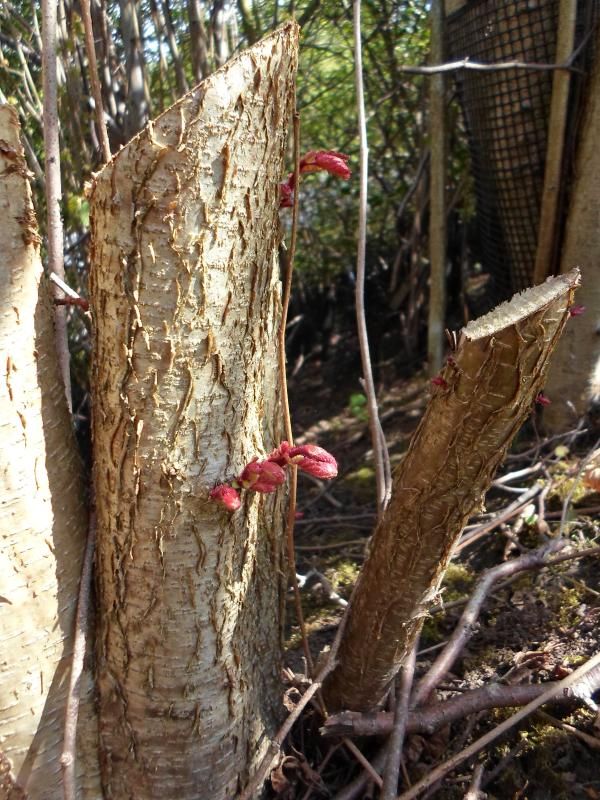
Bud regrowth on coppiced hazel stumps. There is an abundance of hazelnut shrubs along the west side of the site which makes great coppice wood. The poles went to measure swales and later became planting markers. There is of course the possibility of making chairs, fencing, benches or any number of other useful products but for now that remains in the category of things I still need to learn. The stumps here could easily be managed on a 4-5 year rotation to maximise nut crop and pole output.
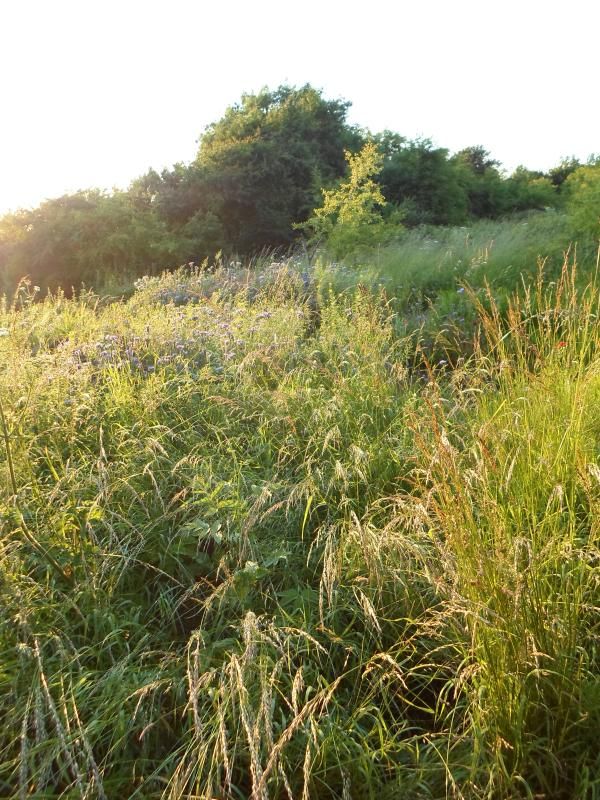
In the sunniest pocket of the site, perennial grasses dominate the scene. After being away for some time I returned to find the guerrilla style of the site on full display; you would almost have to fall over the 4ft hugelkutur beds to see that they were there! The purple phalecia flowers are the give away in this photo but you can really see the effect of our long, mild summer days here.
The first season working with the embankment marked many firsts in my practice of both design and implementation. Most of my experiments had yielded positive results and all had shown me how I might improve and extend them in future. The major patterns in soil, water and climate had been placed in context and mapped for design. I had, through experience, learned to let the weeds be and focus my efforts in thoughtful action where it has the greatest reward. More than that, I had learned to imagine the true potential of the site. I realised at some point that the design in my mind had become vivid enough to visualise in detail as I walked through along the embankment. Whether or not if comes to fruition as I imagine, that moment reaffirmed for me the value of making the effort to really know a place. Next time, I will talk more about the details and specific observations which result.


















